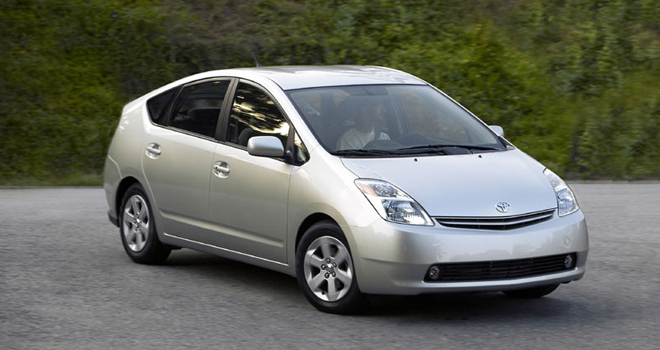By John Voelcker
Spare a thought, if you will, a momentary tear, for 85,000 doomed drivers of three models of hybrid car in California.
They are the unlucky losers of a privilege that saved them time, raised the value of their vehicle, and undoubtedly increased their karmic contentment, all because of a set of tiny stickers.
Those very special stickers gave them the privilege of driving in the state’s High Occupancy Vehicle lanes with only a single occupant. And today is the last day those stickers are valid.
So tomorrow, those drivers must again join the common man in the jam-packed, stop-and-start grind of the regular traffic lanes.
No longer will they whiz past the stalled proletariat, smug in their gasoline-electric fuel economy. They are now mere mortals, just like the rest of us schlubs in our battered Chevies and Nissans.
The state of California instituted the “yellow sticker” program in August 2005 to reduce congestion, thereby lowering tailpipe emissions. At the time, hybrids were the lowest-emission cars available for sale.
The program intended to encourage sales of fuel-efficient hybrids, back when they were unfamiliar to much of the public. But California set a strict bar for reduced emissions, meaning only three cars qualified for the stickers: the Toyota Prius, Honda Civic Hybrid, and 1999-2006 Honda Insight.
With a couple of years left on the program, hybrids that carried the sticker were worth up to $1,500 more in the used-car market than identical models without the stickers.
The stickers were originally set to expire at the end of last year, but howls of protest from hybrid drivers eventually earned them a six-month extension.
That ends today, and no further extensions will be forthcoming. Instead, new HOV-lane access stickers are being offered to drivers of battery electric vehicles like the Tesla Roadster and Nissan Leaf.
Who would buy a $109,000 electric car just to travel solo in the HOV Lane? More wealthy Californians than you might think, said Camille Ricketts of Tesla Motors. The company, she said, has “definitely heard it first-hand from customers that the HOV access played a key role” in their decision to buy a Tesla.
The other plug-in car on sale this year, the 2011 Chevrolet Volt, does not qualify for the sticker. Chevy has said it plans to make the car meet stricter California standards in the near future, which may mean later in the 2012 model year.
The yellow stickers were just one of a number of so-called “Prius perks” being phased out for hybrids and directed instead toward battery electric and plug-in hybrid vehicles.
This story, originally written by John Voelcker, originally posted on AllCarsElectric, an editorial partner of Talking Points Memo.









